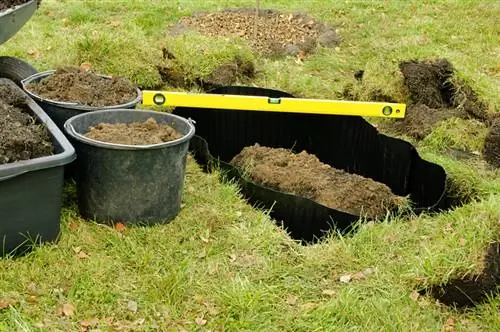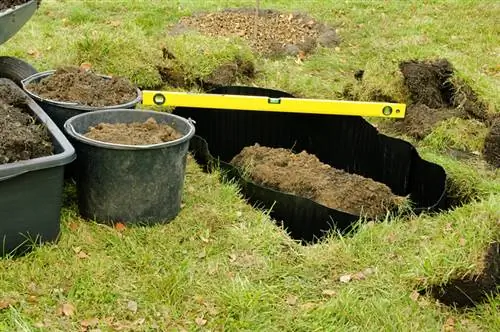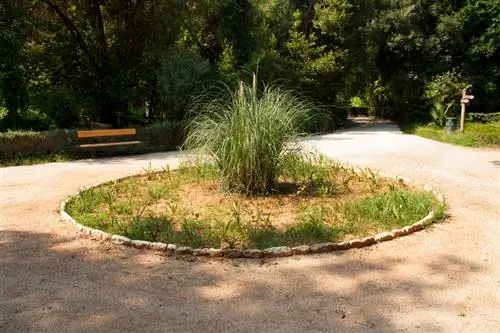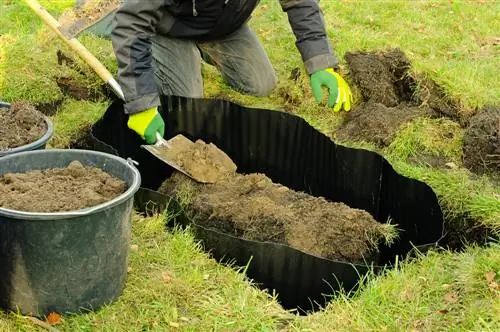- Author admin [email protected].
- Public 2024-01-05 20:48.
- Last modified 2025-01-23 11:20.
Reed can develop roots up to 2 meters deep, some miscanthus varieties reach even deeper. It is therefore essential to create a root barrier when planting reeds in the garden. Below you will find out exactly what it is, how you set it and how much it costs.

How do I set a root barrier for reeds in the garden?
To plant reeds in the garden and prevent uncontrolled root growth, a root barrier made of tear-resistant material, such as 2mm thick HDPE or recycled materials, should be used. Depending on the type of reed, the barrier should be buried 30 to 100 cm deep and overlapping or welded to prevent lateral growth.
What is a root barrier?
A root barrier is usually used in the form of a tension tile (also called root protection membrane by the manufacturers), the material of which is very tear-resistant and therefore impenetrable for the roots. These tiles are usually made of HDPE (€78.00 at Amazon) (high-pressure polyethylene), but there are also some suppliers who offer rhizome barriers made from recycled materials.
How thick should the root barrier for reeds be?
Root barriers are offered in different strengths. Thicknesses of 1, 2 to 2mm are common, with the vast majority of providers offering films with a thickness of 2mm. With this thickness, you can be sure that your reeds or Chinese reeds will not be able to penetrate the film.
How deep should the root barrier be?
For low-growing varieties of miscanthus and reed, a depth of 30 to 40cm is sufficient, medium-high species should have around 50cm of space and giant miscanthus should have space up to one meter in the ground. Depending on their size, a planting distance of 30 to 120cm should be maintained between the individual plants; the same applies to the distance to the edge. Be sure to cover the floor! Otherwise the roots initially only grow downwards, but then spread from there to the sides.
Set root barrier
- Dig a rectangular or round pit of sufficient depth using a spade.
- Place the foil in the pit and press it firmly. If the fleece is not large enough and there are overlaps to cover the entire area, the ends must be connected with an aluminum rail or welded so that the roots do not find their way out.
- The ends of the foil must definitely protrude outwards so that the reeds do not steal over them.
- Then add soil and your reed plants to the foil.
How much does root barrier cost?
The prices of rhizome barriers vary depending on the manufacturer and, above all, the thickness of the film. In general, you can expect prices per meter to be around four euros (with a height of 70cm and a thickness of 2mm). When purchasing, make sure that the film is free of harmful substances and rodent-proof.
Tip
Instead of setting a root barrier, you can also concrete the area.






